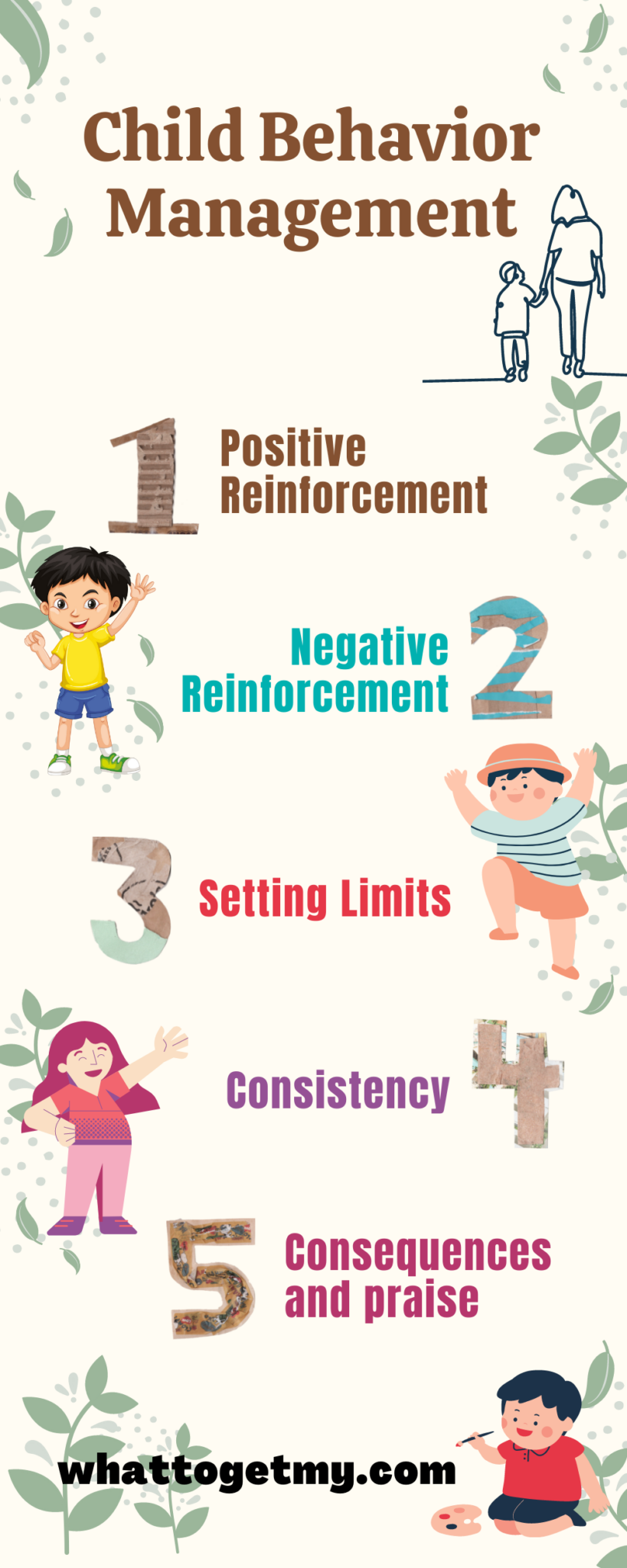Child Behavior Management
Kids’ difficult behavior can be a huge challenge for parents. But by using techniques from behavioral therapy, parents can change the way kids react to the things that set them off.
Child behavior management is not an easy task. You are responsible for teaching your child the right way to behave and setting boundaries for them to follow. It’s important to remember that each child is unique. What works for one child may not work for another.
Establish rules and guidelines for your child to follow. These should be simple and straightforward and should be explained to your child in a way they can understand. It’s important to enforce these rules consistently and to ensure that your child knows the consequences of breaking them.
Introduction
Child behavior management is not an easy task. As a parent, you are responsible for teaching your child the right way to behave and setting boundaries for them to follow. When your child doesn’t follow the rules or behaves in a disruptive or dangerous way, it can be difficult to know what to do.
In this article, we’ll discuss child behavior management and give you some tips on how to deal with difficult behaviors effectively. We’ll cover topics such as understanding why your child is misbehaving, setting rules and expectations, and using discipline techniques that work. We’ll also provide some helpful resources for further reading.
The most important thing to remember when managing a child’s behavior is that each child is unique. What works for one child may not work for another. There are, however, some general guidelines that can help you get started.
Children are born with a natural curiosity.
Children are born with a natural desire to explore the world around them. They also have a need to learn and grow, but they don’t always have the skills or ability to express this desire in ways that make sense for their age group.
This makes it hard for parents who are trying to raise their children properly, especially when they don’t know how best to handle behavior problems. But if your child has been exhibiting challenging behavior patterns or tantrums at home, treatment may be needed before things get out of hand!
How do you manage a child’s behavior?
The first step is establishing rules and guidelines for your child. These should be simple and straightforward and should be explained to your child in a way that they understand. It’s important to enforce these rules consistently and to ensure that your child knows the consequences of breaking them.
It’s also important to praise your child when they follow the rules. Positive reinforcement is a very effective way to encourage good behavior.
If you’re having difficulty managing your child’s behavior, seeking professional help may be helpful.
Understand the child’s needs
It is crucial for parents to understand their child’s needs to manage behavior. Every child is different and will be different. Some children may need more structure and discipline, while others may need freedom and flexibility. Take the time to get to know your child and what works best for them.
Creating a positive and nurturing environment is also key to managing your child’s behavior. This means providing them with love and support, setting clear limits, and consistently following through with consequences. When children feel safe and loved, they are more likely to behave in positive ways.

Understand the temperament of your child
As your child begins to explore the world around them, they will also begin to develop their own unique temperament. It is important to understand your child’s temperament in order to best support their development and behavior management.
Each child is born with a unique set of temperamental traits that will shape their personality and behavior. Some children are naturally more active and outgoing, while others are more introspective and reserved. Some are more sensitive to their environment, while others are more adaptable.
Knowing your child’s temperament can help you to understand their behavior better. For example, if your child is naturally introspective, they may need more time and space to process new information and experiences. If they are more sensitive to their environment, they may be more easily overwhelmed by loud noises or chaotic situations.
Temperament can also play a role in behavior management. Suppose you know that your child is naturally more active and impulsive. In that case, you can create a plan for managing their behavior that includes plenty of physical activity and outlets for their energy. If your child is more introspective, you may need to provide more calm and structured activities to help them focus and stay on task.
Understanding your child’s temperament is an important part of being a parent. It can help you understand their behavior better and create a plan for managing their behavior tailored to their individual needs.
Understand the developmental stage of your child
When it comes to behavior management, it is important to understand your child’s development stage. This will help you better understand their behavior and what they are trying to communicate. It is also important to remember that children are constantly changing and growing, so their behavior will also change over time.
Understand the family situation for both parents and children, including any barriers to good parenting that may exist between them (for example, if one parent is more confident than another).
Understand how schools work in general and how they affect children with special needs or behavior problems at school.
For example, if there are problems with bullies who target certain types of children more often than others; if bullying happens more frequently in some classes than others; what do teachers do when they see bullying going on but don’t intervene because no one has been trained specifically about dealing with this problem yet?
What are the 5 principles of behavior management?
There are five principles of behavior management that can be used to manage student behavior in the classroom effectively. These principles are: positive reinforcement, negative reinforcement, punishment, extinction, and shaping.
1. Positive Reinforcement
Positive reinforcement is when a behavior is followed by a positive consequence, which increases the likelihood of that behavior being repeated.
2. Negative Reinforcement
Negative reinforcement is when a behavior is followed by the removal of an unpleasant condition, which also increases the likelihood of that behavior being repeated.
3. Setting limits
By setting limits, you are telling your child what is acceptable behavior and what is not. This helps to prevent problems before they start.
4. Consistency
It is important to be consistent when setting limits. If you only set limits sometimes, your child will not know what to expect and will be more likely to misbehave. Be sure to explain the limits to your child so they understand why they are being set.
5. Consequences ( punishment) and praise
Punishment is when a behavior is followed by an unpleasant consequence, which decreases the likelihood of that behavior being repeated.
These principles can be used to manage a child’s behavior. However, it is important to note that each principle should be used thoughtfully and deliberately, as too much or too little of any one of these principles can lead to undesired results.
How do you discipline a child with behavior problems?
Discipline is a form of communication, and it’s important to remember that discipline is not punishment. Discipline can be used to reinforce good behavior and avoid bad behavior.
The ABCs of child behavior management
To understand and respond effectively to problematic behavior, you have to think about what came before it and what comes after it. There are three important aspects to any given behavior:
Antecedents: Preceding factors that make a behavior more or less likely to occur. Another, more familiar term for this is triggers. Learning and anticipating antecedents is an extremely helpful tool in preventing misbehavior.
Behaviors: The B stands for the behaviors you’d like to encourage or discourage, for example, swearing or hitting. There are many strategies for encouraging certain behavioral changes, which we cover more of below.
Consequences: The results that naturally or logically follow a behavior. Consequences — positive or negative — affect the likelihood of a behavior recurring. And the more immediate the consequence, the more powerful it is
These factors are important to consider when understanding and responding to problematic behavior. It’s important to remember that there is usually a reason for behaving in a certain way, and it’s not always easy to see. Considering all of these factors will help you devise a plan to address the behavior respectfully and effectively.
What strategies do you use for behavior management with toddlers?
There are a few basic things to keep in mind when it comes to managing toddler behavior. First, toddlers are still learning how to control their emotions and impulses, so expect some tantrums and outbursts. Second, establishing clear rules and expectations will help toddlers understand what is expected of them.
Modeling behavior
One of toddlers’ most important aspects of behavior management is modeling behavior. As a parent or caregiver, it is important to set a good example for toddlers to follow. This means behaving in a way you would want them to and avoiding any negative or destructive behavior.
It can be helpful to explain to toddlers why certain behaviors are important and to praise them when they display positive behavior. However, it is also important to be consistent in your expectations and not give in to demands for attention or tantrums.
Overall, modeling behavior is key to helping toddlers learn how to behave positively and constructively.
Use Time-out
A popular technique is to use time out. Time out involves removing your child from the situation, causing them to misbehave and making them sit in a designated spot for a set period. This can help them to calm down and reflect on their actions.
There are a few things to remember when using time out with toddlers. First, it is important to be consistent with it. If you only use time out sometimes, your child will not understand why they are being punished.
Second, explain to your child why they are being sent to time out. This will help them to understand what they did wrong and why they need to stay in time out. Finally, make sure to follow through with the time out. If you tell your child they need to sit in time out for five minutes, make sure they actually sit in time out for five minutes.
Using time out can be an effective way to manage toddler behavior. Just be sure to be consistent, explain why they are being sent to time out, and follow through with the punishment.
Set up a reward system
Sticker charts and reward systems are also effective ways to manage behavior in toddlers, especially if you’re working with the baby who is not yet talking or taking directions well.
When it comes to setting up a reward system, there are a few things to keep in mind. First, decide what behaviors you would like to encourage. This could include things like staying seated during meals, staying in bed until morning, or using kind words.
Then, come up with a reward system that will motivate your toddler. This could include stickers, small toys, or special privileges such as choosing what to have for lunch. Finally, be consistent with the system, doling out rewards whenever the desired behavior is displayed.
Design a behavior management plan for your child
A behavior management plan is a set of rules and consequences that help kids learn how to behave. The plan’s purpose is to help your child develop good behavior, but you should only use the plan when necessary.
A good behavior management plan will address issues such as:
What you expect from your child
How you want them to act in certain situations (e.g., at home and/or school)
How they’re allowed to respond when they don’t follow your expectations
It is important to be consistent with your rules, boundaries, and expectations for behavior so that they know what is expected of them when they are out in public or at school. This will also help ensure that children have enough time to learn how to act appropriately in any given situation without being reprimanded or punished harshly afterward.
When disciplining a child who has misbehaved or disobeyed an instruction from an authority figure (such as a teacher), always make sure that you use positive reinforcement instead of punishment because this tends to work much better than negative reinforcement techniques such as yelling at someone who makes mistakes on purpose just because they know no better way out there; try using praise instead!
Conclusion
Managing a child’s behavior requires patience and love, but it is definitely possible.
Managing a child’s behavior requires patience and love, but it is definitely possible. You cannot control your child’s actions, but you can help them manage their emotions by providing structure and consistency in your home environment.
It will keep them safe and help them grow into a well-behaved adult who is able to make good decisions on their own.
02 HOURS 26 MINUTES
ESTIMATED TIME DESIGNING AND UPLOADING THIS ARTICLE
10 HOURS 26 MINUTES
ESTIMATED TIME RESEARCHING AND WRITING THIS ARTICLE
LOOKING FOR MORE GIFTS?
Try our AMAZING GIFT FINDER TOOL! Find GIFTS with 1 CLICK!
LOOKING FOR MORE GIFTS?
Try our AMAZING GIFT FINDER TOOL! Find GIFTS with 1 CLICK!
LOOKING FOR MORE GIFTS?
Try our AMAZING GIFT FINDER TOOL! Find GIFTS with 1 CLICK!
You Might Also Like

How to Tell Someone They Can’t Stay at Your House
How to Tell Someone They Can’t Stay at Your House WhatToGetMy Instructional Article Keeping relationships with family and friends is important, but not to the detriment of your personal space and privacy. Telling them no to staying at your house does not mean you value

15 Smart Things to Say when Someone Insults You
15 Smart Things to Say when Someone Insults You WhatToGetMy Instructional Article DEALING WITH INSULTS Insults are a hard blow to our self-esteem and self-worth especially when we are forced to hear them regularly, which can lead to unhappiness and occasionally depression. People who insult

15 Fun Things to Do on Long Island With Boyfriend
15 Fun Things to Do on Long Island With Boyfriend WhatToGetMy Instructional Article If you and your boyfriend are planning on going for a romantic getaway to Long Island, consider visiting places that either you or your partner will find exciting. you may also try

5 REASONS WHY MOTHERS ARE THE PIECE THAT HOLDS A FAMILY TOGETHER.
5 REASONS WHY MOTHERS ARE THE PIECE THAT HOLDS A FAMILY TOGETHER. WhatToGetMy Instructional Article The emotional nucleus of the family is its mother. They act as a haven for everyone’s emotions and try their utmost to protect us from harm. What are the justifications

11 Signs that Alcohol Is Killing You
11 Signs that Alcohol Is Killing You WhatToGetMy Instructional Article Every year it is estimated that alcohol contributes to the deaths of over 3 million people with men being more affected than women. Whilst some of this death is instantaneous such as with car accidents

11 Gifts for People Who Meditate
Getting gifts for people who meditate should be a well-thought-out process. Get them presents that are meaningful and sentimental, no matter how small. Knowing what kind of meditation they practice is key to getting them a gift that they will love, appreciate, and find useful

43 Adventurous Things To Do With Your Girlfriend
43 Adventurous Things To Do With Your Girlfriend WhatToGetMy Instructional Article Adventurous activities are a guaranteed fun way to keep the fire of love burning in any relationship. This article lists all the fun, crazy, and exciting things to do with your girlfriend to keep

15 Signs of a Lazy Man (Husband) and 9 Ways How to Deal with a Lazy Husband.
15 Signs of a Lazy Man (Husband) and 9 Ways How to Deal with a Lazy Husband. WhatToGetMy Instructional Article A lazy man will drain and suck the life out of a relationship because he will bring the same lazy, lackluster disposition he has into

Fun Things To Do in a Hotel Room With Friends
Fun Things To Do in a Hotel Room With Friends WhatToGetMy Instructional Article Hotel rooms can provide good fun space especially if you don’t have many outdoor activities or things to do with your friends. There are still a number of fun things to do

6 Real Fish Games Online For Free and 11 Other Fun Games To Play Online for Free.
6 Real Fish Games Online For Free and 11 Other Fun Games To Play Online for Free. WhatToGetMy Instructional Article This article covers free fish games to play online, free fish games online for kids, and other fun games to play online for free such



